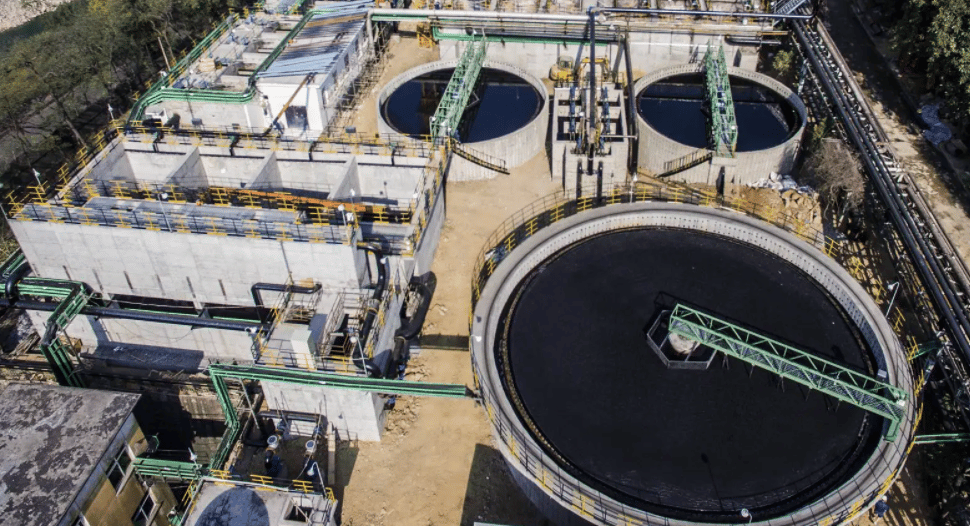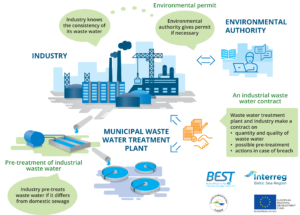Secret Techniques in Hazardous Waste Water Treatment Procedures
The therapy of commercial wastewater is an essential element of environmental management, including a variety of techniques designed to mitigate the impact of pollutants. From the essential physical methods that divide solids to the advanced chemical and organic procedures that target particular toxins, each method plays a vital role in accomplishing water high quality criteria. Developments in innovations such as membrane layer filtration and progressed oxidation processes offer ingenious solutions for enhancing treatment effectiveness. Recognizing how these techniques adjoin and their implications for sustainability elevates important concerns regarding the future of wastewater monitoring in industry.
Physical Treatment Methods
How effectively can physical treatment methods deal with the intricacies of commercial wastewater? Physical therapy approaches play a critical role in the preliminary stages of wastewater management, focusing largely on the elimination of solids and huge particulates. Methods such as filtering, sedimentation, and flotation are essential for reducing the focus of put on hold solids, thus enhancing the efficiency of succeeding treatment processes.
Sedimentation entails the gravitational settling of solids, enabling the separation of larger materials from the wastewater. This method is specifically effective in making clear water prior to chemical or organic treatments. Purification, on the various other hand, utilizes numerous media to catch particle matter, guaranteeing that smaller sized pollutants are removed. This strategy can be tailored to suit different kinds of industrial effluents, generating clearer effluent streams.
Furthermore, flotation protection methods, which make use of air bubbles to lift put on hold solids to the surface area for removal, are reliable in dealing with wastewater with high focus of fats, oils, and oils. Overall, physical therapy methods act as a crucial initial step in the detailed management of industrial wastewater, making certain that the load on subsequent therapy phases is reduced and boosting total treatment effectiveness.
Chemical Therapy Techniques
While physical therapy techniques prepared for reliable wastewater management, chemical therapy techniques are essential for attending to the much more intricate pollutants often discovered in industrial effluents. These techniques make use of different chemical agents to precipitate, neutralize, or oxidize dangerous substances, making certain a more detailed removal of toxins.
One common method is coagulation and flocculation, where chemical coagulants such as light weight aluminum sulfate or ferric chloride are added to advertise the gathering of suspended bits. This procedure enhances solid-liquid separation, minimizing turbidity and improving water high quality. In addition, neutralization procedures are employed to change the pH of wastewater, utilizing bases or acids to neutralize acidic or alkaline streams, respectively.
Oxidation-reduction responses play a crucial role in degrading natural impurities and virus. Chemical oxidants like ozone, hydrogen, or chlorine peroxide are made use of to damage down complex organic compounds, making them less dangerous or extra eco-friendly. Furthermore, advanced oxidation processes (AOPs) combine several oxidation methods to improve contaminant elimination performance.
Organic Therapy Procedures
The efficiency of wastewater treatment is substantially improved by biological treatment processes, which harness the natural metabolic tasks of microbes to decay natural issue and eliminate contaminants. Industrial Waste Water Treatment. These processes primarily entail cardio and anaerobic digestion, each tailored for details kinds of wastewater
Cardio therapy processes make use of oxygen to support microbial growth, advertising the failure of natural contaminants into co2 and water. Usual approaches include activated sludge systems, where aeration containers assist in the mixing of wastewater with bacteria, and flowing filters, which urge biofilm growth on media surfaces.
Conversely, anaerobic therapy processes occur in the lack of oxygen, utilizing anaerobic microorganisms to disintegrate raw material, leading to biogas production, a renewable resource resource. Anaerobic digesters are commonly utilized in index industrial setups for this function, effectively lowering the volume of sludge while creating important biogas.
The option of a biological therapy method relies on wastewater qualities, therapy goals, and governing standards. The combination of biological processes in wastewater therapy not only improves toxin removal performance but likewise advertises sustainability by reducing chemical use and sustaining resource healing.
Advanced Oxidation Processes

Typical AOP strategies include Fenton's reagent, photocatalysis, and ozonation. Fenton's reagent, a mix of hydrogen peroxide and ferrous iron, militarizes the formation of hydroxyl radicals, making it effective for dealing with wastewater containing phenolic compounds and other stubborn materials.
AOPs offer several advantages, consisting of lowered sludge manufacturing and the ability to treat wastewater with high focus of natural toxins. However, the application of AOPs needs mindful factor to consider of functional parameters and cost-effectiveness, guaranteeing that these sophisticated strategies are properly integrated into existing wastewater therapy systems.
Membrane Layer Filtering Technologies

Microfiltration is reliable for eliminating put on hold solids and microorganisms, while ultrafiltration targets smaller natural molecules and viruses. Nanofiltration connects the space between ultrafiltration and turn around osmosis, efficiently removing organic compounds and divalent ions. Reverse osmosis offers the highest degree of filtration, used visit their website primarily for desalination and getting rid of mono-valent ions.
Membrane layer innovations use many benefits, consisting of reduced power consumption contrasted to typical therapy methods, modular style for scalability, and the potential for water recovery and reuse. Obstacles such as membrane fouling and the requirement for routine upkeep should be addressed to make sure system efficacy. Overall, membrane purification modern technologies represent a crucial element of contemporary industrial wastewater therapy approaches, promoting sustainability and resource conservation in water management.
Verdict
In final thought, commercial wastewater therapy utilizes a varied range of methods, including physical, chemical, biological, and progressed methods. Each approach plays a crucial role in efficiently addressing different impurities, enhancing water top quality, and promoting resource sustainability. The integration of these strategies fosters a detailed therapy method, making sure that industrial effluents fulfill regulative requirements while minimizing ecological influence. Proceeded innovations in these techniques will additionally improve the performance and efficiency of wastewater therapy processes in industrial setups.
The therapy of commercial wastewater is a critical facet of ecological management, including a variety of strategies created to mitigate the influence of pollutants.Exactly how properly can physical treatment approaches attend to the complexities of commercial wastewater?Advanced oxidation processes (AOPs) stand for a cutting-edge technique in commercial wastewater treatment, created to properly weaken organic contaminants that are typically resistant to traditional therapy techniques (Industrial Waste Water Treatment).In conclusion, commercial wastewater therapy utilizes a varied variety of techniques, consisting of physical, chemical, organic, and advanced methods. Proceeded developments in these methods will certainly additionally boost the performance and performance of wastewater therapy procedures in industrial settings